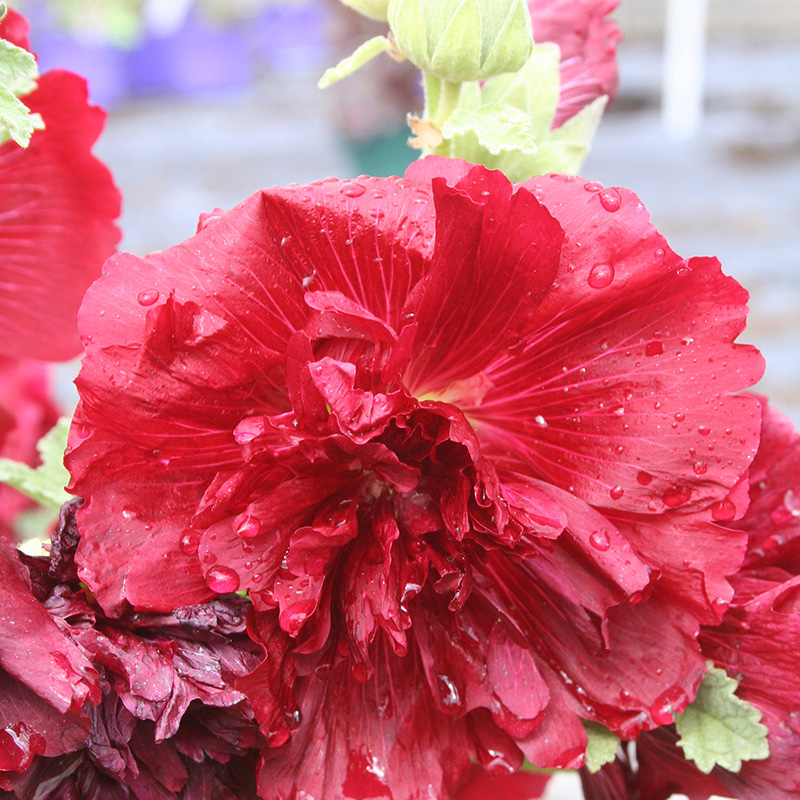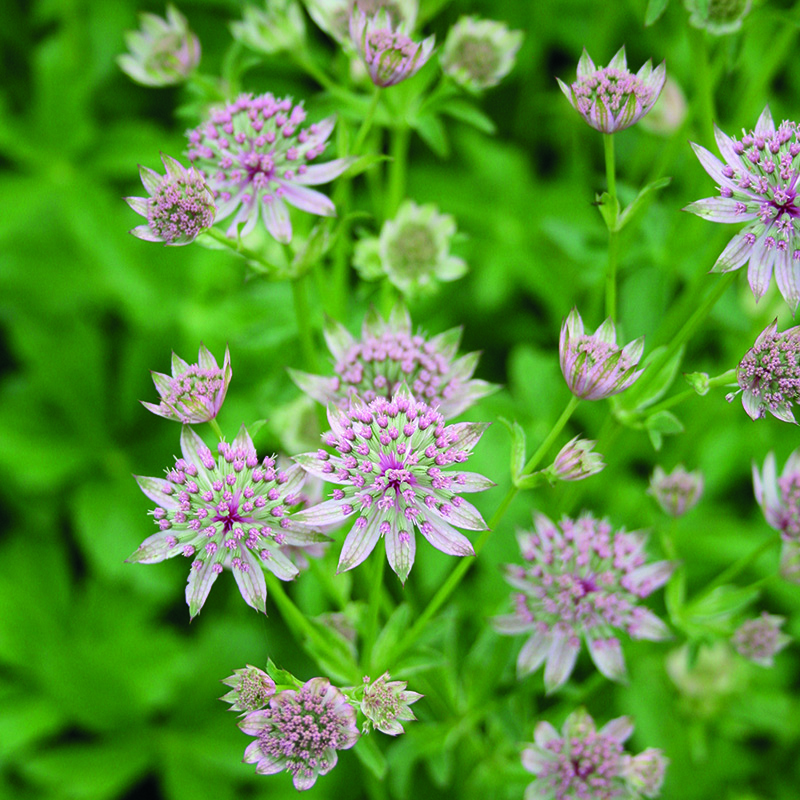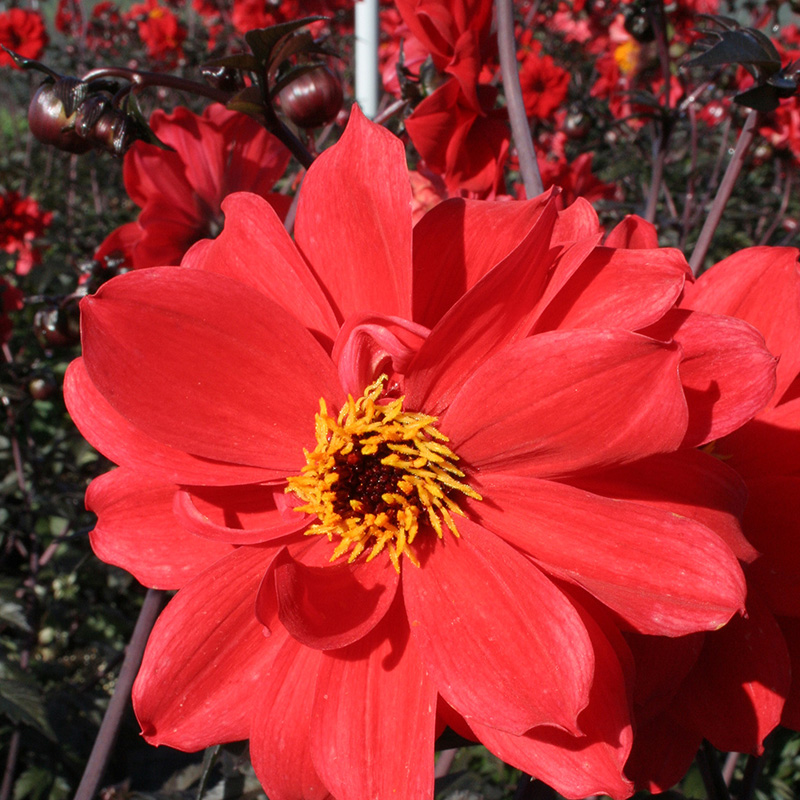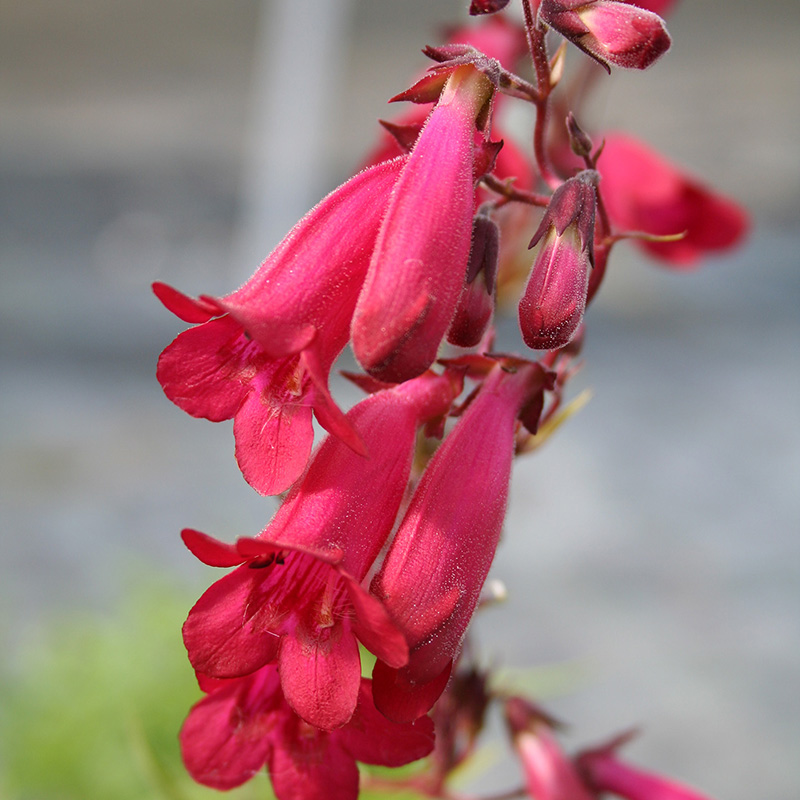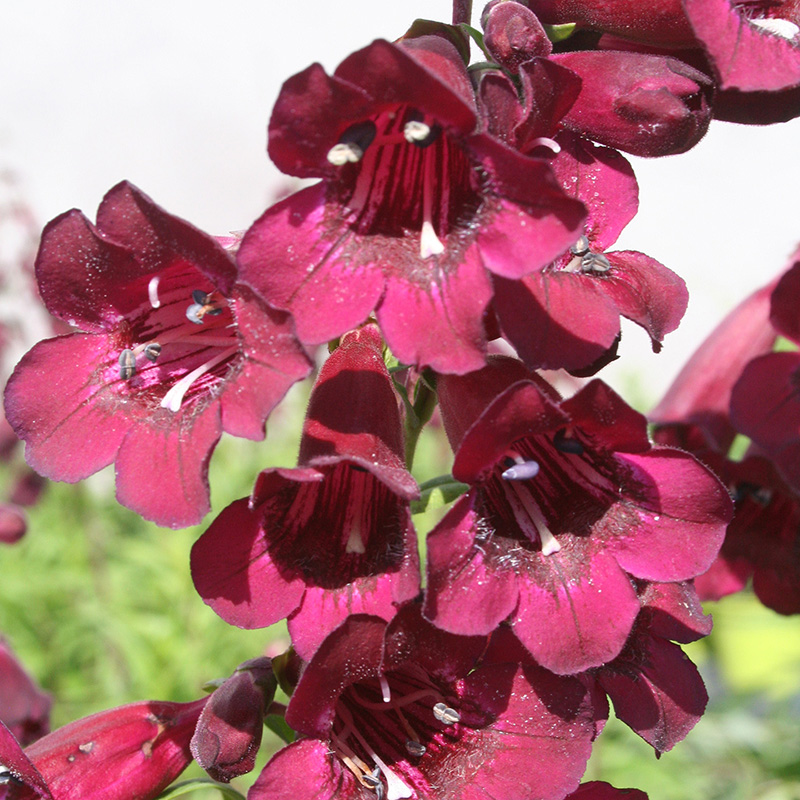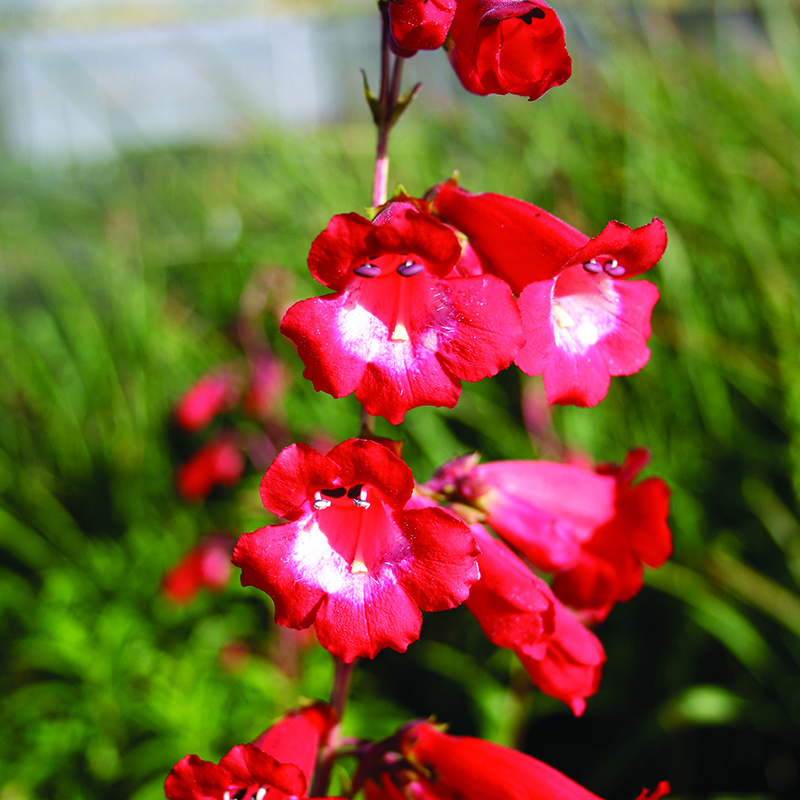Herbaceous Perennials
Herbaceous plants (in botanical use frequently simply herbs) are plants that have no persistent woody stem above ground. The term is mainly applied to perennials, but in botany it may also refer to annuals or biennials, and include both forbs and graminoids.
Annual herbaceous plants die completely at the end of the growing season or when they have flowered and fruited, and they then grow again from seed.
Herbaceous perennial and biennial plants may have stems that die at the end of the growing season, but parts of the plant survive under or close to the ground from season to season.
Aganpanthus Purple Cloud
Agapanthus -Purple-Cloud is a cultivar of Agapanthus, commonly known as African lilies or Lily of the Nile. It is a perennial flowering plant that belongs to the Amaryllidaceous family. 'Purple Cloud' is named for its striking clusters of purple flowers, which are borne on tall stalks above the foliage. That grows to the height of 90cm, likes a sunny to partial shade position and needs to be in moist to well drained soil.
Eupatorium purpureum ‘Ruby’
A Eupatorium with a neat and compact growing habit and blooming earlier than other varieties. Bright green foliage forms and upright clump. In late Summer purple red stems bear a profusion of pink-purple flowers. Highly attractive to bees, butterflies and other pollinators. Garden plant for flowerbed in moist, free-draining soil in full sun. Good in beds, borders, wildlife gardens, or great in pots and containers. Height 80 cm. Spread 80 cm.
Hesperis matronalis ‘White’
A self-seeding perennial forms rosettes of dark green leaves. Fabulously scented bright white flowers in clusters above the foliage. Their fragrance perfume the air in Summer evenings. They are also edible and look great sprinkled over salads. Highly attractive to bees and other beneficial insects. Garden plant for flowerbed in fertile and moist, but well-drained soil in full sun. Suitable for beds, borders, cottage style gardens. Ideal for wildlife and meadow style gardens. Height and spread (approx) - 90cm x 50cm.












